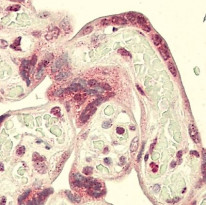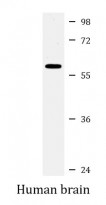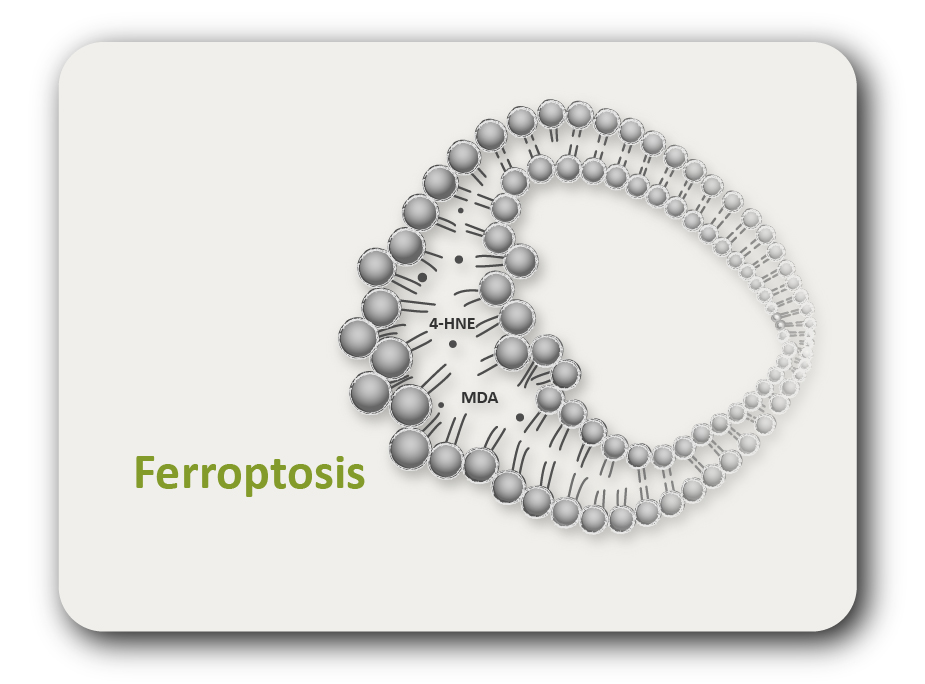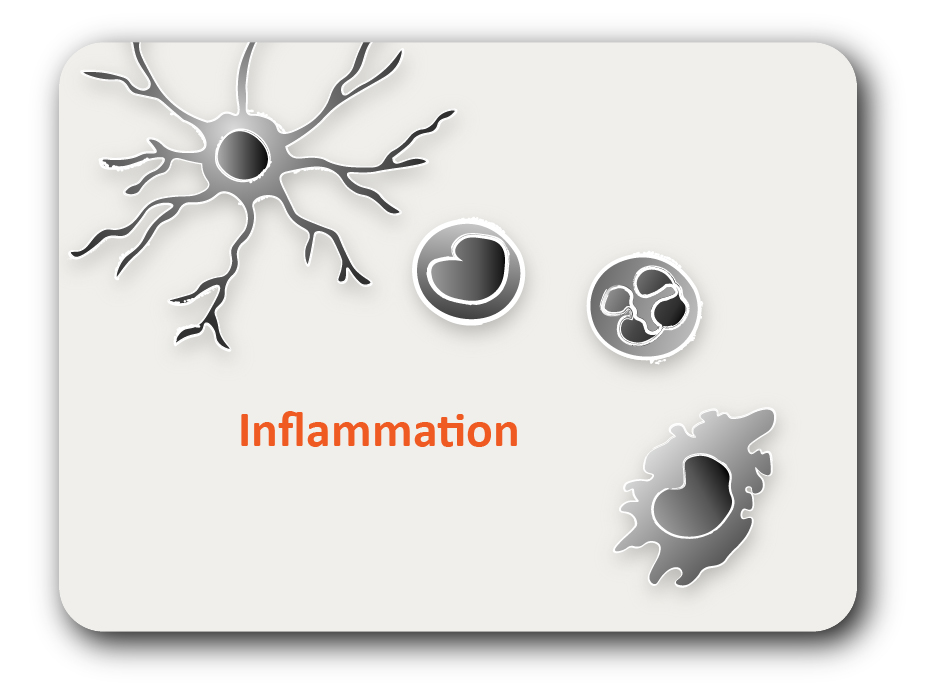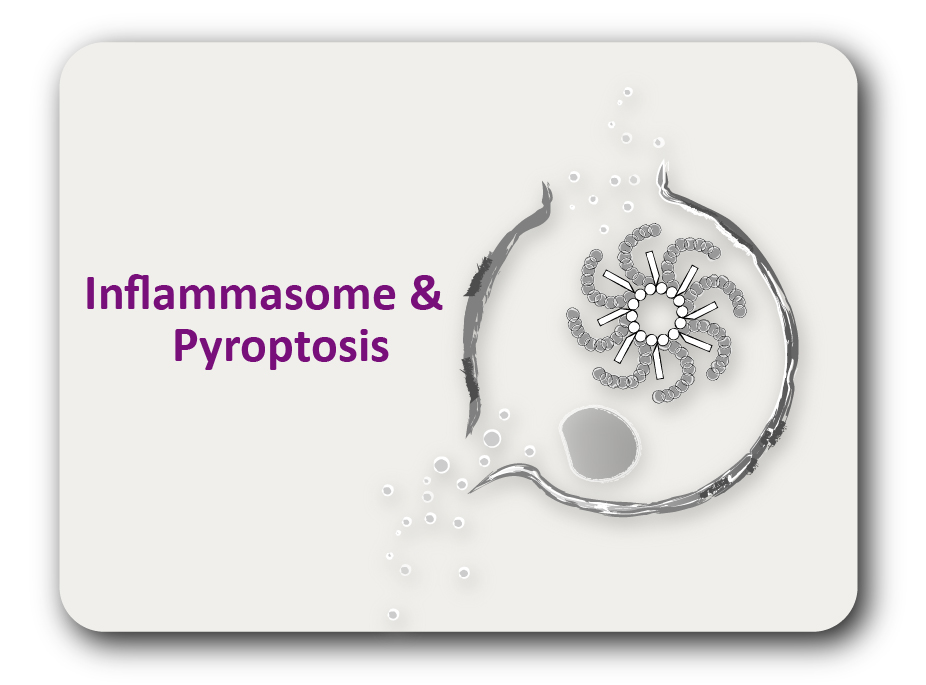ARG59368
anti-ERVW1 / Syncytin 1 antibody
anti-ERVW1 / Syncytin 1 antibody for IHC-Formalin-fixed paraffin-embedded sections,Western blot and Human
概述
| 产品描述 | Rabbit Polyclonal antibody recognizes ERVW1 / Syncytin 1 |
|---|---|
| 反应物种 | Hu |
| 应用 | IHC-P, WB |
| 宿主 | Rabbit |
| 克隆 | Polyclonal |
| 同位型 | IgG |
| 靶点名称 | ERVW1 / Syncytin 1 |
| 抗原物种 | Human |
| 抗原 | KLH-conjugated synthetic peptide corresponding to aa. 400-429 of Human ERVW1 / Syncytin 1. |
| 偶联标记 | Un-conjugated |
| 別名 | HERV-W envelope protein; HERV7Q; Env-W; gp24; Syncytin-1; HERVWENV; SU; ENVW; Envelope polyprotein gPr73; HERV-W_7q21.2 provirus ancestral Env polyprotein; TM; Syncytin; Endogenous retrovirus group W member 1; ENV; HERVW; HERV-W-ENV; HERV-7q; gp50; HERV-7q Envelope protein; ERVWE1; Enverin; HERV |
应用说明
| 应用建议 |
|
||||||
|---|---|---|---|---|---|---|---|
| 应用说明 | * The dilutions indicate recommended starting dilutions and the optimal dilutions or concentrations should be determined by the scientist. | ||||||
| 阳性对照 | Human brain |
属性
| 形式 | Liquid |
|---|---|
| 纯化 | Purification with Protein G. |
| 缓冲液 | PBS and 0.09% (W/V) Sodium azide. |
| 抗菌剂 | 0.09% (W/V) Sodium azide. |
| 存放说明 | For continuous use, store undiluted antibody at 2-8°C for up to a week. For long-term storage, aliquot and store at -20°C or below. Storage in frost free freezers is not recommended. Avoid repeated freeze/thaw cycles. Suggest spin the vial prior to opening. The antibody solution should be gently mixed before use. |
| 注意事项 | For laboratory research only, not for drug, diagnostic or other use. |
生物信息
| 数据库连接 | |
|---|---|
| 基因名称 | ERVW-1 |
| 全名 | endogenous retrovirus group W, member 1 |
| 背景介绍 | Many different human endogenous retrovirus (HERV) families are expressed in normal placental tissue at high levels, suggesting that HERVs are functionally important in reproduction. This gene is part of an HERV provirus on chromosome 7 that has inactivating mutations in the gag and pol genes. This gene is the envelope glycoprotein gene which appears to have been selectively preserved. The gene's protein product is expressed in the placental syncytiotrophoblast and is involved in fusion of the cytotrophoblast cells to form the syncytial layer of the placenta. The protein has the characteristics of a typical retroviral envelope protein, including a furin cleavage site that separates the surface (SU) and transmembrane (TM) proteins which form a heterodimer. Alternatively spliced transcript variants encoding the same protein have been found for this gene. [provided by RefSeq, Mar 2010] |
| 生物功能 | This endogenous retroviral envelope protein has retained its original fusogenic properties and participates in trophoblast fusion and the formation of a syncytium during placenta morphogenesis. May induce fusion through binding of SLC1A4 and SLC1A5. Endogenous envelope proteins may have kept, lost or modified their original function during evolution. Retroviral envelope proteins mediate receptor recognition and membrane fusion during early infection. The surface protein (SU) mediates receptor recognition, while the transmembrane protein (TM) acts as a class I viral fusion protein. The protein may have at least 3 conformational states: pre-fusion native state, pre-hairpin intermediate state, and post-fusion hairpin state. During viral and target cell membrane fusion, the coiled coil regions (heptad repeats) assume a trimer-of-hairpins structure, positioning the fusion peptide in close proximity to the C-terminal region of the ectodomain. The formation of this structure appears to drive apposition and subsequent fusion of membranes. [UniProt] |
| 细胞定位 | Surface protein: Cell membrane; Peripheral membrane protein. Note=The surface protein is not anchored to the membrane, but localizes to the extracellular surface through its binding to TM. Transmembrane protein: Cell membrane; Single-pass type I membrane protein. Syncytin-1: Virion. [UniProt] |
| 预测分子量 | 60 kDa |
| 翻译后修饰 | Specific enzymatic cleavages in vivo yield mature proteins. Envelope glycoproteins are synthesized as a inactive precursor that is heavily N-glycosylated and processed likely by furin in the Golgi to yield the mature SU and TM proteins. The cleavage site between SU and TM requires the minimal sequence [KR]-X-[KR]-R. The intracytoplasmic tail cleavage by the viral protease that is required for the fusiogenic activity of some retroviruses envelope proteins seems to have been lost during evolution. The CXXC motif is highly conserved across a broad range of retroviral envelope proteins. It is thought to participate in the formation of a labile disulfide bond possibly with the CX6CC motif present in the transmembrane protein. Isomerization of the intersubunit disulfide bond to an SU intrachain disulfide bond is thought to occur upon receptor recognition in order to allow membrane fusion. [UniProt] |
检测图片 (2) Click the Picture to Zoom In
-
ARG59368 anti-ERVW1 / Syncytin 1 antibody IHC-P image
Immunohistochemistry: Formalin-fixed and paraffin-embedded Human placenta stained with ARG59368 anti-ERVW1 / Syncytin 1 antibody.
-
ARG59368 anti-ERVW1 / Syncytin 1 antibody WB image
Western blot: 35 µg of Human brain lysate stained with ARG59368 anti-ERVW1 / Syncytin 1 antibody at 1:1000 dilution.
